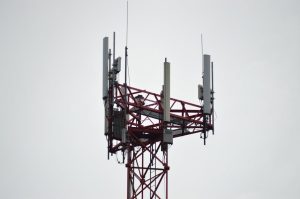
Starlink: The Revolutionary Satellite Internet Constellation by SpaceX
Starlink is a satellite internet constellation developed by SpaceX, a private aerospace manufacturer and space transport services company founded by Elon Musk. The project aims to provide high-speed, low-latency internet connectivity to remote and underserved areas around the world. With its cutting-edge technology and ambitious goals, Starlink has the potential to revolutionize the way we access the internet.
The idea of Starlink was first announced by Elon Musk in 2015, with the goal of creating a network of low-Earth orbit (LEO) satellites that would provide internet connectivity to the entire globe. Since then, SpaceX has launched numerous satellites as part of the Starlink constellation, with the first batch of 60 satellites launched in May 2019. As of now, there are over 2,000 Starlink satellites in orbit, with plans to launch thousands more in the coming years.
One of the key features of Starlink is its use of LEO satellites, which orbit the Earth at an altitude of around 550 kilometers. This is significantly lower than traditional geostationary satellites, which orbit at an altitude of around 36,000 kilometers. The lower altitude of LEO satellites reduces latency and increases internet speeds, making it possible to support applications that require real-time communication, such as online gaming and video conferencing.
Another important aspect of Starlink is its user terminal, which is a small, dish-like antenna that customers will use to connect to the satellite network. The user terminal is designed to be compact and easy to install, making it possible for customers to set up their own internet connection without the need for professional help. The terminal uses advanced phased array technology to steer the beam and track the satellites, ensuring a stable and reliable connection.
Starlink has the potential to bring numerous benefits to individuals and communities around the world. For example, it could provide internet access to remote and underserved areas, where traditional internet infrastructure is lacking. This could have a significant impact on education, healthcare, and economic development in these areas, as well as provide a means of communication during natural disasters or other emergencies.
Technical Details of Starlink
Starlink uses a combination of advanced technologies to provide high-speed internet connectivity. The satellites use Ku-band and Ka-band frequencies to communicate with the user terminals, which are equipped with advanced phased array antennas. The system also uses advanced beamforming and beamsteering technologies to optimize the signal and minimize interference.
The Starlink satellites are designed to be highly efficient and flexible, with the ability to beamform and shape the signal in real-time. This allows the system to adapt to changing environmental conditions, such as weather and atmospheric interference, and to optimize the signal for specific applications and use cases.
In addition to its technical capabilities, Starlink also has a number of innovative features that set it apart from other satellite internet systems. For example, the system uses a mesh network architecture, which allows the satellites to communicate with each other and with the user terminals in a highly flexible and efficient way. This makes it possible to provide internet connectivity to a wide range of devices and applications, from simple web browsing to complex enterprise networks.
Impact and Future of Starlink
The impact of Starlink on the satellite internet industry and beyond is likely to be significant. With its high-speed, low-latency internet connectivity, Starlink has the potential to disrupt traditional internet service providers and to enable new applications and use cases that were not previously possible.
One of the areas where Starlink is likely to have a major impact is in the provision of internet access to remote and underserved areas. With its ability to provide high-speed internet connectivity to anywhere in the world, Starlink could help to bridge the digital divide and to bring the benefits of the internet to communities that have been left behind.
In addition to its impact on the satellite internet industry, Starlink also has the potential to drive innovation and economic growth in a wide range of fields. For example, it could enable the development of new applications and services in areas such as telemedicine, online education, and e-commerce, as well as provide a platform for the Internet of Things (IoT) and other emerging technologies.
